
ATMOSFERA
Scope & Guideline
Innovating Solutions for Atmospheric Challenges
Introduction
Aims and Scopes
- Atmospheric Dynamics and Weather Systems:
Research on the mechanisms driving atmospheric phenomena, including severe weather events, tropical cyclones, and synoptic patterns, is a core focus. The journal publishes studies that enhance understanding of weather forecasting and climate modeling. - Climate Change and Variability:
The journal addresses the impacts of climate change on various systems, including hydrology, ecosystems, and human health. It presents empirical studies and modeling efforts that assess climate trends and their socio-economic implications. - Air Quality and Pollution Studies:
Research on atmospheric pollutants, their sources, and health impacts is emphasized. The journal includes studies on particulate matter, chemical compositions, and urban air quality, contributing to the understanding of health risks and environmental policies. - Hydrometeorology and Precipitation Studies:
The journal explores precipitation patterns, drought monitoring, and hydrological modeling. It includes innovative methodologies for estimating and predicting hydrological extremes, which are crucial for water resource management. - Geospatial and Remote Sensing Applications:
Utilizing remote sensing and geostatistical methods to analyze atmospheric and environmental variables is a distinctive feature of the journal. This includes studies on land use changes, aerosol properties, and urban heat islands.
Trending and Emerging
- Machine Learning and Advanced Modeling Techniques:
There is a growing trend in applying machine learning algorithms to atmospheric modeling and forecasting, particularly in predicting weather patterns and analyzing climate data. This reflects the broader integration of data science into environmental research. - Impact of Climate Change on Human Health:
An increasing number of studies are focusing on the direct and indirect impacts of climate change on human health, including air quality and exposure to pollutants. This theme is becoming increasingly relevant as global temperatures rise and urbanization expands. - Integrated Approaches to Climate Mitigation:
Research is increasingly addressing how different sectors can work together to mitigate climate change impacts. This includes studies on renewable energy integration, urban planning, and sustainable practices to address environmental degradation. - Teleconnections and Climate Variability:
The examination of teleconnections, such as the influence of El Niño and La Niña on regional climates, is gaining attention. Understanding these complex interactions is crucial for improving climate prediction and resilience strategies. - Urban Climate Studies:
There is a noticeable increase in research focusing on urban climates, including the urban heat island effect and its implications for sustainability and public health. This trend highlights the importance of urban planning in the context of climate change.
Declining or Waning
- Historical Climate Events Analysis:
There is a noticeable decline in studies focused on historical climate events and their analysis. Recent publications are shifting towards contemporary and predictive studies, with less emphasis on retrospective analyses. - Localized Case Studies:
The journal appears to be moving away from localized case studies that focus on specific weather events or phenomena in small geographic areas. Instead, there is a trend towards broader regional analyses that can provide insights applicable to larger contexts. - Traditional Statistical Methods in Meteorology:
The use of traditional statistical methods for weather and climate analysis seems to be declining. There is an increasing preference for advanced modeling techniques and machine learning approaches, indicating a shift in methodological focus.
Similar Journals
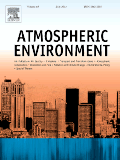
ATMOSPHERIC ENVIRONMENT
Empowering researchers to address the pressing issues of our atmosphere.ATMOSPHERIC ENVIRONMENT is a premier journal dedicated to advancing the field of atmospheric science and environmental studies, published by Pergamon-Elsevier Science Ltd in the United Kingdom. With an impressive impact factor and recent rankings placing it in the Q2 quartile for Atmospheric Science and Q1 for miscellaneous Environmental Science, it stands as a leading source of high-quality research articles that bridge the gap between atmospheric phenomena and environmental issues. The journal, which has been disseminating significant findings since its inception in 1972, emphasizes an interdisciplinary approach, inviting contributions that address the pivotal challenges facing our atmosphere today. Although it does not currently offer open access options, the journal remains accessible through various academic platforms, ensuring that the latest research reaches its vast audience of researchers, professionals, and students who are striving to deepen their understanding of atmospheric processes. With a robust scope that encompasses a range of topics from climate change to air quality management, ATMOSPHERIC ENVIRONMENT is essential reading for anyone committed to fostering sustainable environmental practices and innovative scientific research.
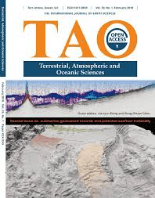
TERRESTRIAL ATMOSPHERIC AND OCEANIC SCIENCES
Unveiling Connections Between Land, Air, and SeaTERRESTRIAL ATMOSPHERIC AND OCEANIC SCIENCES, published by SpringerNature, is a distinguished peer-reviewed journal that has been an essential platform for innovative research in the fields of atmospheric science, oceanography, and Earth and planetary sciences since its inception. With an Open Access policy established in 1990, the journal ensures wide dissemination of knowledge, allowing researchers, professionals, and students to access cutting-edge findings without restrictions. Based in Switzerland and featuring a comprehensive coverage from 1996 to 2024, the journal currently holds a Q3 ranking across various categories, indicating its growing significance in the scientific community. Although it is positioned within the 39th percentile in Earth and Planetary Sciences, its commitment to fostering high-quality research makes it a valuable resource for advancing understanding of terrestrial environments and their interconnections. Researchers seeking a platform for their work in atmospheric and oceanic sciences will find TERRESTRIAL ATMOSPHERIC AND OCEANIC SCIENCES to be an ideal venue for sharing their insights with a global audience.

Atmospheric Science Letters
Empowering global collaboration in atmospheric science.Atmospheric Science Letters, published by WILEY, is a leading open-access journal in the field of Atmospheric Science. Since its establishment in 2000, it has significantly contributed to advancing knowledge related to the Earth's atmosphere, focusing on both theoretical and practical aspects. With an impressive Q2 ranking in the Atmosphere Science category as of 2023 and a Scopus rank of 62 out of 148, this journal provides a platform for researchers and professionals to share their findings and insights. The journal’s commitment to open access since 2016 ensures that cutting-edge research is accessible to a global audience, fostering collaboration and innovation in the atmospheric sciences. Addressed from its headquarters at 111 River St, Hoboken, NJ, USA, Atmospheric Science Letters is pivotal for students, researchers, and professionals seeking to stay abreast of the latest developments in this dynamic field.
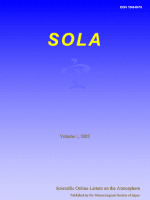
SOLA
Fostering global dialogue in atmospheric phenomena.SOLA is a distinguished journal published by the Meteorological Society of Japan, focusing on cutting-edge research in the field of atmospheric science. Since transitioning to an Open Access model in 2018, SOLA aims to facilitate the dissemination of knowledge and foster collaboration among researchers from around the globe. With a proud history spanning from 2005 to 2024, the journal has earned a reputation for high-quality publications, achieving a Q1 ranking in Atmospheric Science according to the 2023 category quartiles. Although its H-Index is currently not available, SOLA is recognized in Scopus rankings, standing at #82 out of 148 in Earth and Planetary Sciences, demonstrating its impact in the field. With its headquarters in Tokyo, Japan, and an unwavering commitment to advancing scientific understanding, SOLA serves as an essential resource for researchers, professionals, and students dedicated to exploring the complexities of atmospheric phenomena.
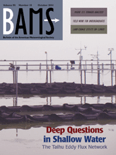
BULLETIN OF THE AMERICAN METEOROLOGICAL SOCIETY
Elevating atmospheric science through rigorous inquiry and innovation.BULLETIN OF THE AMERICAN METEOROLOGICAL SOCIETY, published by the American Meteorological Society, stands as a premier forum in the field of meteorology and atmospheric science, boasting an impressive ranking in the Q1 category for 2023. With a long-standing history dating back to 1972, this journal serves as a vital resource for researchers, practitioners, and students dedicated to advancing the understanding of atmospheric phenomena. The journal facilitates the dissemination of cutting-edge research, innovative methodologies, and significant findings that propel the scientific community forward. Although not an Open Access journal, it remains a critical publication for comprehending complex environmental interactions, climate change, and weather-related phenomena. The BULLETIN OF THE AMERICAN METEOROLOGICAL SOCIETY is essential reading for anyone invested in atmospheric sciences, providing invaluable insights that shape policy, enhance safety, and promote environmental sustainability.
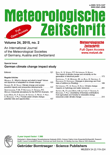
METEOROLOGISCHE ZEITSCHRIFT
Bridging Theory and Practice in Meteorological ScholarshipMETEOROLOGISCHE ZEITSCHRIFT is a distinguished academic journal dedicated to the field of meteorology and atmospheric sciences, published by E SCHWEIZERBARTSCHE VERLAGSBUCHHANDLUNG. With an ISSN of 0941-2948 and an E-ISSN of 1610-1227, this journal has been an invaluable resource for researchers, professionals, and students since its inception. It has embraced an Open Access model since 2014, promoting wider dissemination of research findings. Based in Stuttgart, Germany, the journal is recognized for its rigorous peer-review process and is currently positioned in the Q3 quartile for Atmospheric Science as per the 2023 category rankings. Additionally, it ranks #97 out of 148 in the Scopus database, placing it in the 34th percentile among Earth and Planetary Sciences. Covering a broad spectrum of topics relevant to meteorology, METEOROLOGISCHE ZEITSCHRIFT serves as a platform for innovative research and theoretical contributions, aiming to advance understanding of atmospheric phenomena and their implications for climate and weather. Researchers and practitioners alike will find valuable insights within its pages, making it a significant asset in the landscape of meteorological scholarship.

Asian Journal of Atmospheric Environment
Advancing Knowledge for a Sustainable AtmosphereAsian Journal of Atmospheric Environment, published by SPRINGERNATURE, is a renowned open-access journal established in 2007, dedicated to advancing research in the fields of Atmospheric Science and Environmental Science. With an ISSN of 1976-6912 and E-ISSN of 2287-1160, the journal aims to offer a platform for the dissemination of cutting-edge research findings, reviews, and innovative methodologies addressing critical environmental issues faced in Asian and global contexts. As of 2023, it holds a respectable Q3 ranking in both Atmospheric Science and Environmental Science categories, positioning itself within the competitive landscape of scholarly publications. The journal is indexed in Scopus and emphasizes its commitment to enhancing accessibility and widespread dissemination of knowledge, making significant contributions to environmental sustainability and atmospheric research. Researchers, professionals, and students are encouraged to engage with the journal as it continues to evolve through its converged years, providing a vital resource for exploring and addressing the challenges that shape our atmospheric environment.

Asia-Pacific Journal of Atmospheric Sciences
Exploring the Frontiers of Atmospheric ScienceWelcome to the Asia-Pacific Journal of Atmospheric Sciences, a leading publication in the field of atmospheric science, published by the Korean Meteorological Society. With an ISSN of 1976-7633 and an E-ISSN of 1976-7951, this journal has been a cornerstone for researchers and practitioners in the atmospheric sciences since its inception in 2008. Recognized for its rigorous peer-reviewed articles, it holds a commendable Q2 quartile ranking in 2023 and is placed at the 51st rank out of 148 in the Earth and Planetary Sciences, reflecting its impact within the community with a 65th percentile. The journal features a broad scope encompassing meteorology, climatology, and environmental sciences, making it an essential resource for scholars and industry experts alike. As an open access journal, it ensures that groundbreaking research is widely accessible, fostering collaboration and innovation across the Asia-Pacific region and beyond. Explore the latest findings and advancements in atmospheric sciences and contribute to the dynamic field of climate research through the journal's engaging content.

Journal of Southern Hemisphere Earth Systems Science
Empowering Scholarship for a Resilient Planet.The Journal of Southern Hemisphere Earth Systems Science, published by CSIRO PUBLISHING, stands as a pivotal resource for researchers and professionals in the fields of Atmospheric Science, Global and Planetary Change, and Oceanography. Established in 2016 and operating under an Open Access model since 2019, this journal provides a platform for innovative research and critical discourse on earth systems in the Southern Hemisphere. It has achieved impressive rankings with a Q1 classification across key disciplines and is recognized in Scopus with significant percentile rankings, showcasing its influence and relevance within the scientific community. The journal is dedicated to fostering scholarship that addresses the complex interactions of earth systems, offering valuable insights for those engaged in environmental science and sustainability initiatives. Its commitment to facilitating open access resources makes it an invaluable tool for researchers and students alike, striving to enhance our understanding of global environmental changes.
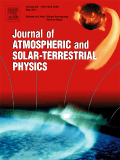
JOURNAL OF ATMOSPHERIC AND SOLAR-TERRESTRIAL PHYSICS
Fostering Interdisciplinary Dialogue in Atmospheric ScienceJournal of Atmospheric and Solar-Terrestrial Physics, published by Pergamon-Elsevier Science Ltd, stands as a pivotal academic resource in the realms of Atmospheric Science, Geophysics, and Space and Planetary Science. With an ISSN of 1364-6826 and an E-ISSN of 1879-1824, this journal encompasses a robust collection of research findings and reviews that address the intricacies of atmospheric processes and solar-terrestrial interactions. The journal has shown consistent academic performance, earning commendable rankings in 2023, including Q3 in Atmospheric Science and Q2 in Geophysics, reflecting its importance for scholarly communication and advancement in these fields. Spanning an impressive convergence of research from 1997 to 2024, it aims to foster interdisciplinary collaboration and inspire innovations among researchers, professionals, and students. Although it currently does not offer open access, the journal is committed to disseminating high-quality content that continues to drive forward our understanding of complex environmental phenomena.